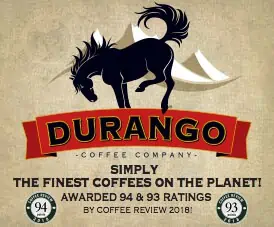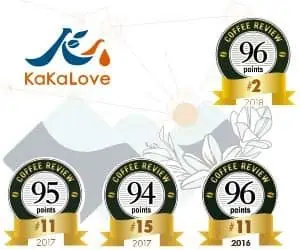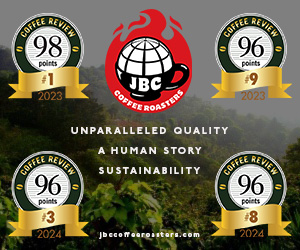Interpreting Coffee Reviews
Aroma, acidity, body, flavor and aftertaste are the standard descriptive categories used by Coffee Review and many professionals when evaluating coffee. Other evaluative systems use as many as ten descriptive categories, but we prefer to use the traditional set of five. Keep in mind that simply because a characteristic, like sweetness, for example, does not appear as a separate category does not mean it is not considered and valued. We consider sweetness in terms of its impact on the acidity category, for example (a sweet-toned acidity is valued higher than an overly dry or sourish acidity), flavor, and, very importantly, on aftertaste, where a sweet-toned aftertaste is valued more than a bitterish or astringent aftertaste.
We use a rating system of 1 (low) to 10 (high) for each of the five categories, reflecting both quantity (how intense) and quality (how pleasing.) Overall ratings provide a summary assessment of reviewed coffees and are based on a scale of 50 to 100.
Degree or darkness of roast dramatically affects a coffee’s flavor profile. For each roasted coffee, we report its roast level in quantitative descriptive terms based on readings from a specially modified spectrophotometer popularly called an Agtron. Click here to learn about roast color and Agtron numbers.
Aroma
How intense and pleasurable is the aroma when the nose first descends over the cup and is enveloped by fragrance? Aroma also provides a subtle introduction to various nuances of acidity, taste and flavor: bitter and sweet tones, fruit, flower or herbal notes, and the like.
Acidity
Acidity is the bright, dry sensation that enlivens the taste of coffee. Without acidity coffee is dull and lifeless. Acidity is not a sour sensation, which is a taste defect, nor should it be excessively drying or astringent, though it sometimes is. At best it is a sweetly tart vibrancy that lifts the coffee and pleasurably stretches its range and dimension. Acidity can be delicate and crisp, lush and rich, powerfully tart but sweet, or backgrounded but vibrant, to cite only a few positive ways to characterize it. The darker a coffee is roasted, the less overt acidity it will display.
Body
Body and mouthfeel describe sensations of weight and texture. Body can be light and delicate, heavy and resonant, thin and disappointing; in texture it can be silky, plush, syrupy, lean or thin.
Flavor and Aftertaste
Flavor and aftertaste include everything not suitably described under the categories aroma, acidity and body. An assessment of flavor includes consideration of the balance of basic tastes – sweet, bitter and sour in particular, and specific aroma and flavor notes, which are many and can be described by associations like floral (honeysuckle, rose, lilac, etc.), nuances of sweetness (honey, molasses, brown sugar), aromatic wood (cedar, pine, sandalwood) and above all fruit (from bright citrus to lusher, rounder fruit like apricot or plum, or pungent fruit like black currant or mango). Descriptors of flavor may also be global – balanced, deep, delicate, etc. Aftertaste or finish describes reflects sensations that linger after the coffee has been swallowed (or spit out). Generally we tend to reward coffees in which pleasing flavor notes continue to saturate the aftertaste long after the coffee is gone, and the sensations left behind are generally sweet-toned rather than excessively bitter or drying and astringent.
Overall Coffee Rating
The scale for the overall coffee ratings runs from 50 to 100, and reflects the reviewers’ overall subjective assessment of a coffee’s sensory profile as manifest in the five categories aroma, acidity, body and flavor and aftertaste. Overall ratings are interpreted as follows:
| Rating | Interpretation |
| 95-100 | Exceptional |
| 90-94 | Very Good to Outstanding |
| 85-89 | Good |
| 80-84 | Fair |
| <80 | Poor |
The higher end of our rating system currently calibrates roughly as follows:
97+ = Means: “We have not tasted a coffee of this style as splendid as this one for a long, long time”
95-96 = Perfect in structure, flawless, and shockingly distinctive and beautiful
93-94 = Exceptional originality, beauty, individuality and distinction, with no significant negative issues whatsoever
91-92 = An very good to outstanding coffee with excitement and distinction in aroma and flavor – or an exceptional coffee that still perhaps has some issue that some consumers may object to but others will love – a big, slightly imbalanced acidity, for example, or an overly lush fruit
89-90 = A very good coffee, drinkable, with considerable distinction and interest
87-88 = An interesting coffee but either 1) distinctive yet mildly flawed, or 2) solid but not exciting
85/86 = An acceptable, solid coffee, but nothing exceptional — the best high-end supermarket whole bean, for example










